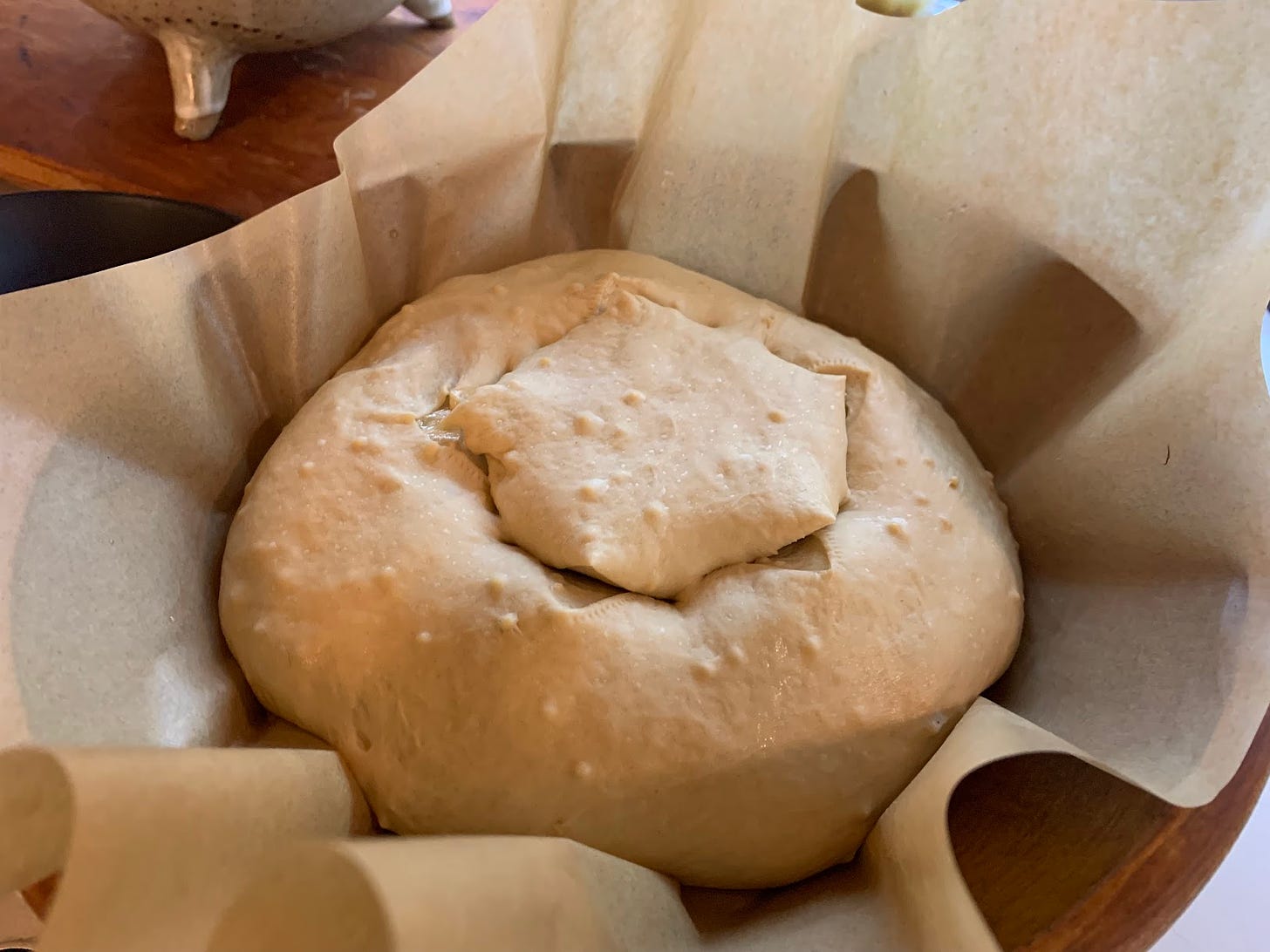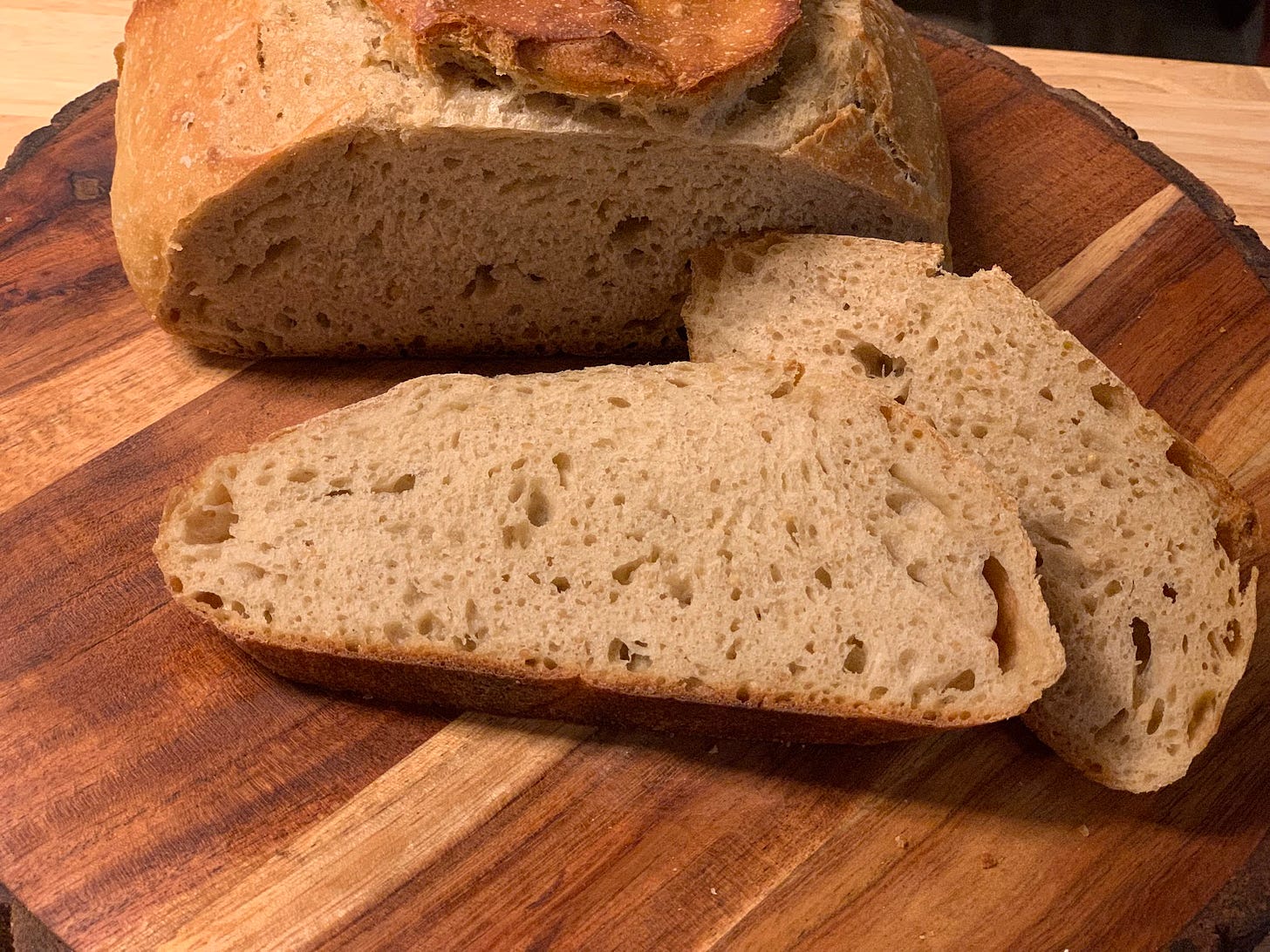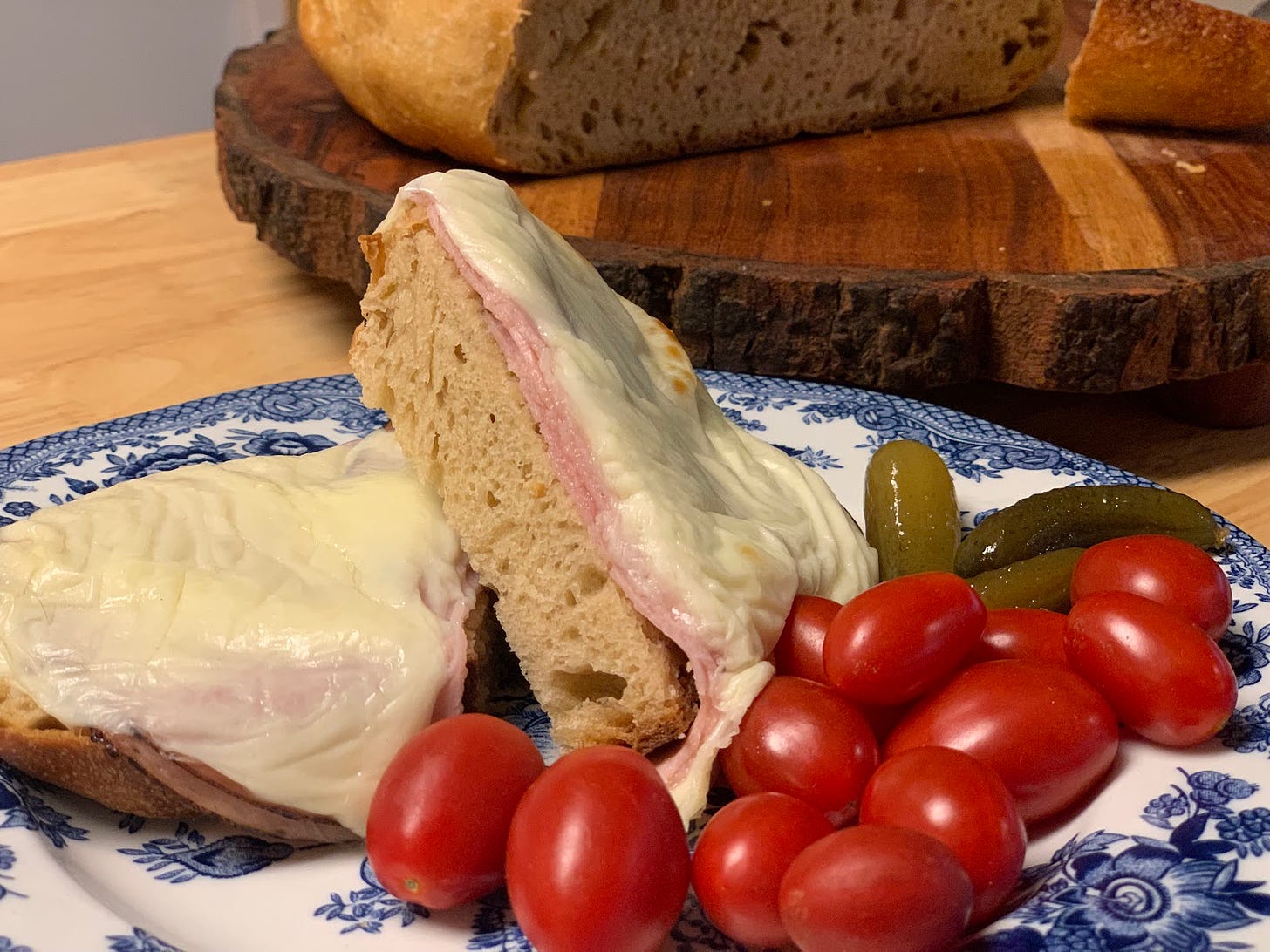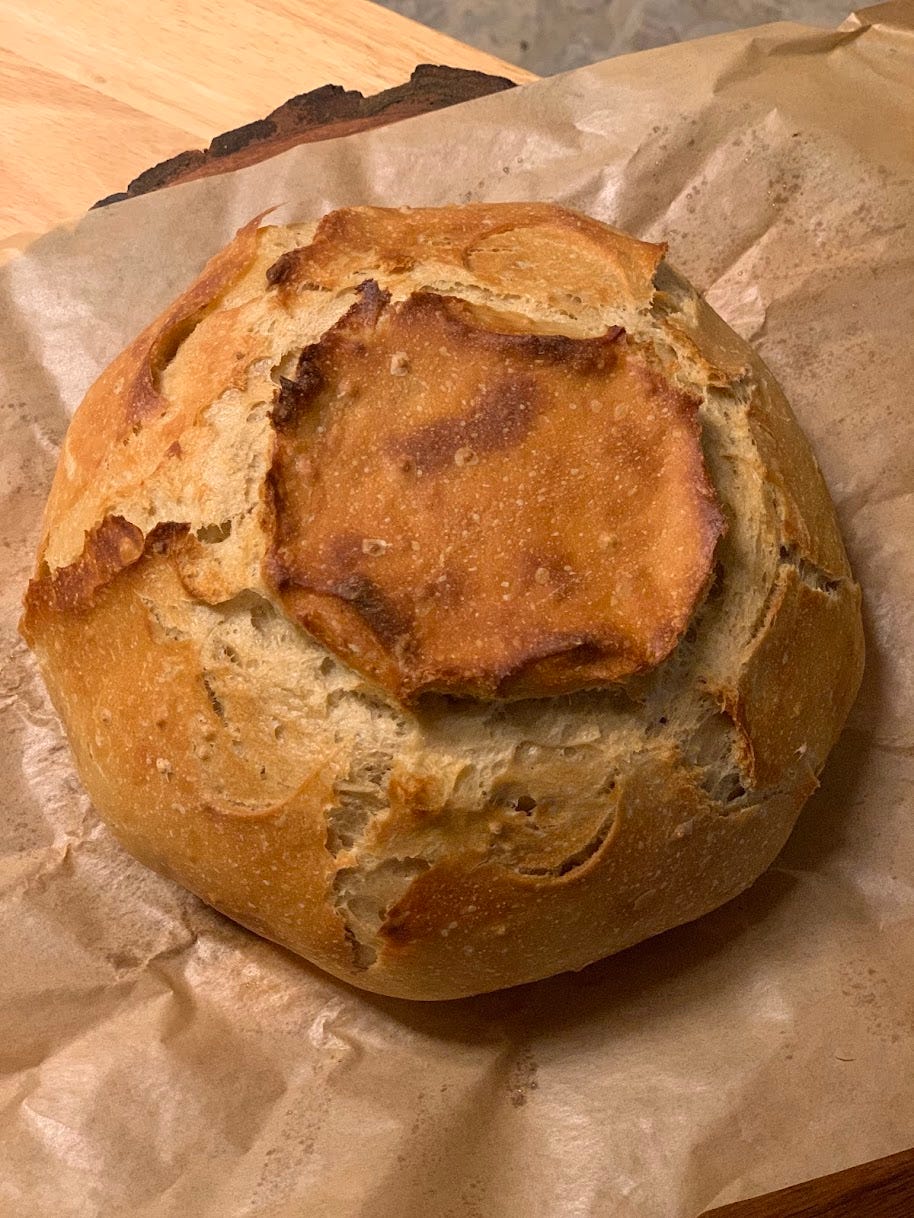My friends influence my cooking in many ways. Today, my friend George asked if I was going to do food blogging and post recipes any longer, as he missed it. My friend JimJim makes a beer bread which uses the beer as a leavening agent in a quick-bread, and it’s delicious. I was talking with him about it, and realized I haven’t made my version of beer bread in far too long.
I baked this in a dutch oven, but if you don’t have one it will be fine in a loaf pan or just a boule on a cookie sheet for that matter. Heck, it will make up nicely into rolls if you are so inclined.
Keep in mind the beer, and the mustard, that you choose will affect the end flavor of the bread. If you want to imitate the sourness of true sourdough, use a hoppy IPA or something like it. A darker beer with loads of flavor is my preference. Given that neither of us drink beer, and we generally buy it for a friend, or for cooking, this is a good way to use up the beer before it goes off. As for the mustard, I’ll sometimes get carried away with buying interesting-looking jars of it, then they languish in the back of the fridge for ages until I finally make up something like this, or a creamy mustard sauce. I like to use a stone-ground or whole grain mustard, but if I haven’t got one on hand I’ll add in mustard seeds for texture and flavor.
Finally, I have and love a stand mixer for bread. If you haven’t got one, this will take a little more time and effort. If you’re used to making bread, you won’t even notice it. If not, think of it as an upper-body workout.
If the beer is refrigerated, bring it to room temperature before using.
Beer & Mustard Loaf
12 oz beer, at room temperature, need not be flat
2 1/4 tsp yeast
1/8 c mustard (add a tablespoonful of seeds if you like)
3 1/2 c all-purpose flour
Mix together liquid ingredients, and yeast, stir in flour a cupful at a time. When dough begins to form into a ball, set the stand mixer to medium speed and allow to knead for 10-15 minutes.
Move the dough to a lightly oiled bowl, turning to coat in oil. Cover with a light cloth and allow to stand until doubled. This time will depend on the warmth of your kitchen, but somewhere between 30 minutes to an hour.
Preheat oven to 450F and put your dutch oven with lid in the oven while it is heating. Move the dough, folding from side to side and end to end a couple of times, to a sheet of parchment paper for proofing. This can be set into another bowl if you want to encourage the shape.
Just before placing into the dutch oven, snip or slash a design into the loaf to allow for the rapid rise. Carefully remove the dutch oven from the oven, set the lid aside, then use the parchment paper as a sling to lower the dough quickly into the dutchy. Place the lid back on, put the whole thing in the oven, and set a timer for 15 minutes. When that goes off, remove the lid, and let it back for another 15 minutes. Bread should be browned and crisp, with a hollow sound when tapped. Let it go a little longer if it isn’t any of those things.
Allow to cool before slicing or tearing into it. Particularly good as part of a ploughman’s lunch, or for sandwiches.
Also lovely with just butter. This is a denser, moist loaf with a nicely chewy crumb due to the long kneading. If you like it chewier, use a bread flour. If you want the crust to be harder, bake at 500F. I like a bread to be, shall we say, not quite so heavily armored.
One thing about baking in the dutchy, it makes a pretty loaf of bread! If you have trouble finishing all of this, keep in mind that savory bread pudding is a delicious thing.










I am so making this tomorrow. We're going to a friend's for dinner, and I'll take it along.
It's so pretty! I can't eat it! But it's pretty!